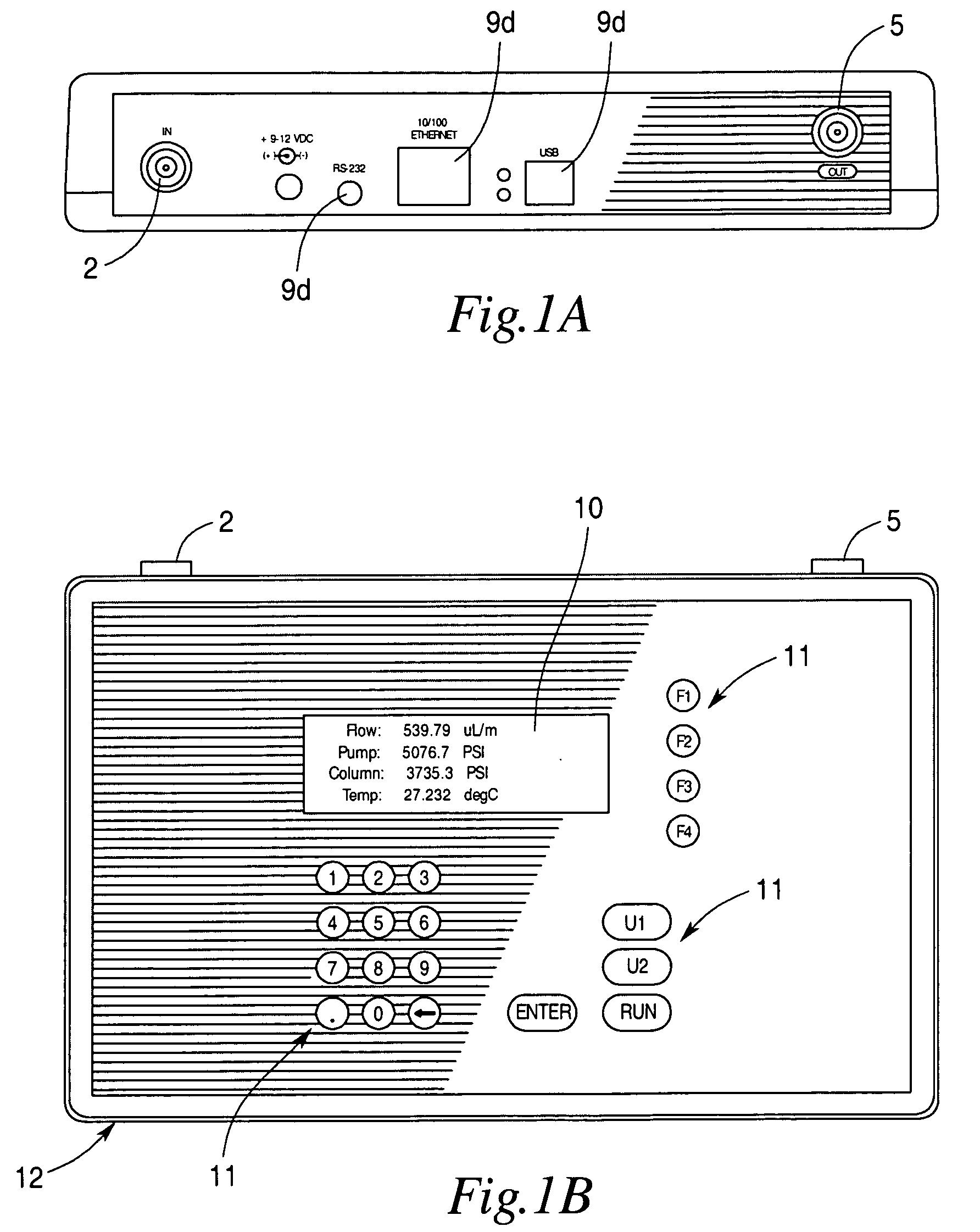Viscometric flowmeter
a flowmeter and flow rate technology, applied in liquid/fluent solid measurement, fluid pressure measurement, machine/engine, etc., can solve problems such as inability to accurately measure flow rate, and inability to meet flow rate, etc., to achieve faster response, improve accuracy, and improve the effect of dynamic rang
- Summary
- Abstract
- Description
- Claims
- Application Information
AI Technical Summary
Benefits of technology
Problems solved by technology
Method used
Image
Examples
Embodiment Construction
[0048]The present invention comprises a system and a method for reproducibly and accurately measuring the parameters that affect the flow of liquids in pressure-driven pumping systems. By way of example, the system can be used to determine pressure, temperature, flow, and other parameters in liquid chromatography (LC), which includes preparative chromatography and high performance liquid chromatography (HPLC) systems. Pressures in HPLC can be very high (up to 20,000 PSI) and flow rates can be extremely low (below μL / min) and thus difficult to measure accurately and control under the best of conditions. The system is such that it can advantageously be used to provide data for feedback and control of pumps or other devices which directly impact the fluid delivery required for liquid chromatography / mass spectrometry (LC / MS) systems.
[0049]Using a temperature dependent viscosity factor for the desired fluid and the radius and length of a tube, said radius and length preferably also being...
PUM
| Property | Measurement | Unit |
|---|---|---|
| inner diameter | aaaaa | aaaaa |
| inner diameter | aaaaa | aaaaa |
| viscosity | aaaaa | aaaaa |
Abstract
Description
Claims
Application Information
 Login to View More
Login to View More - R&D
- Intellectual Property
- Life Sciences
- Materials
- Tech Scout
- Unparalleled Data Quality
- Higher Quality Content
- 60% Fewer Hallucinations
Browse by: Latest US Patents, China's latest patents, Technical Efficacy Thesaurus, Application Domain, Technology Topic, Popular Technical Reports.
© 2025 PatSnap. All rights reserved.Legal|Privacy policy|Modern Slavery Act Transparency Statement|Sitemap|About US| Contact US: help@patsnap.com



